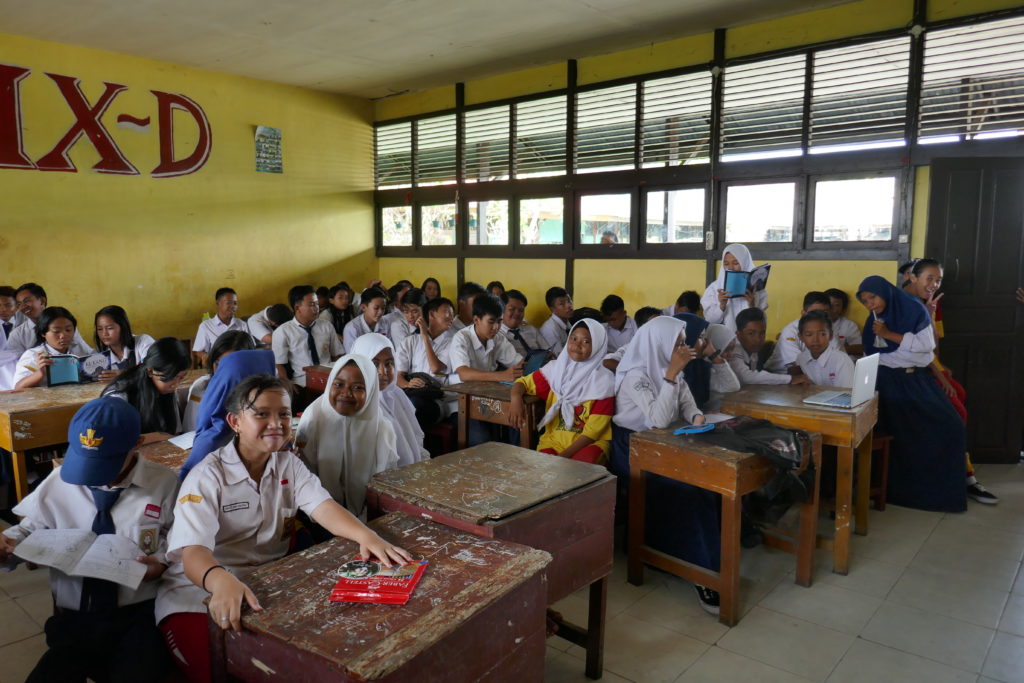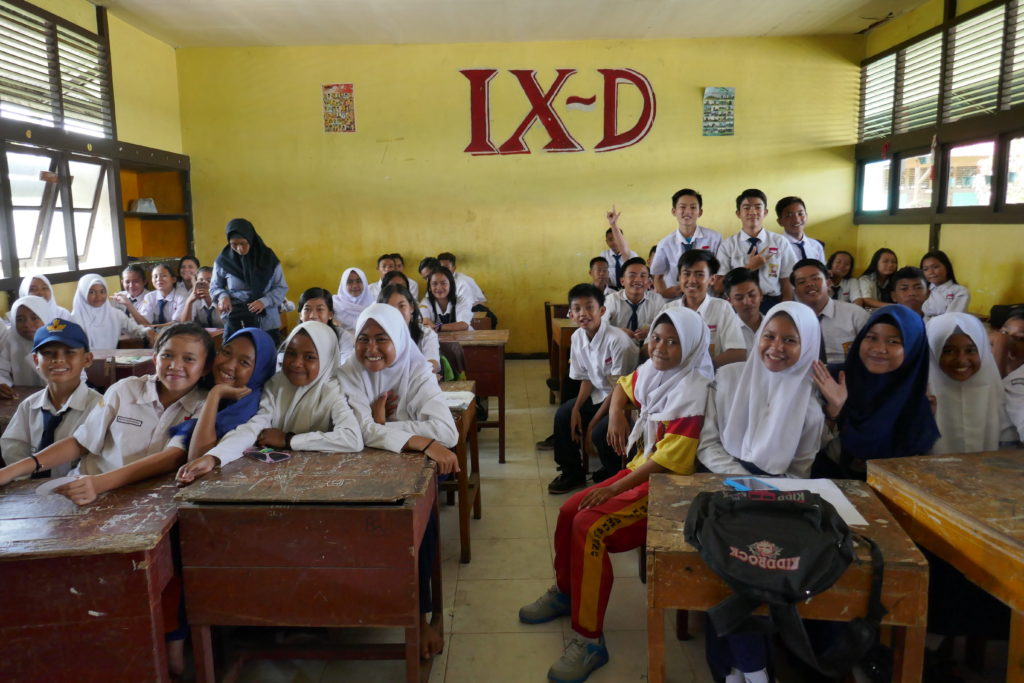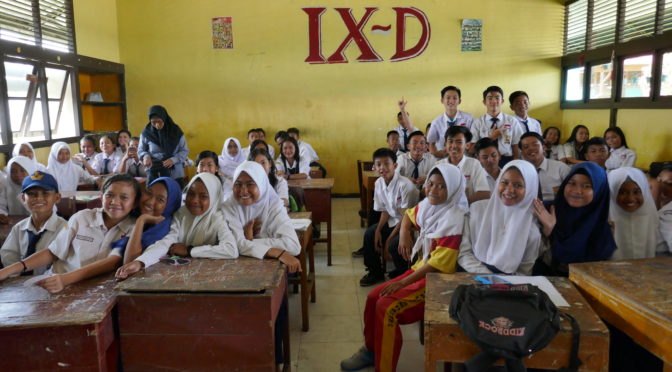We then read a book together, a story of a mother loris, Tereh (an actual loris that we monitor in our field site in Java), and her son, Bunga. The story follows them throughout the night as Tereh teaches Bunga how to find food. They stumble upon a house, inside of which is a human mother and her son. The mother tells the son to remember to eat his vegetables, just as Tereh had told Bunga how to find food for himself. This is meant to encourage the children reading the book to empathize with the slow loris characters and to recognize a connection between them and their own mothers. I think this message has really hit home with a many of the children. In the fun activities they complete as part of the session, I have noticed many mother-child themes.

Our most recent trip was to schools in Western Kalimantan, around the city of Pontianak. One class had nearly 100 students! It was very overwhelming, but the staff and students were absolutely thrilled to have us there. A group of kids even prepared a traditional dance just for us. It was wonderful to see how enthusiastic these kids, as well as the teachers, were to learn about slow lorises and conservation. In 2-3 months, we will return to each school to do a follow-up session, and to see how the children’s’ knowledge and attitudes have changed since the we were last there. It is extremely exciting that we can take these lessons to other parts of Indonesia, and spread conservation awareness to children with different lifestyles and living in varying environments. This is one of the many ways we hope to encourage people to respect and protect the amazing wildlife of Indonesia. ELLA BROWN


